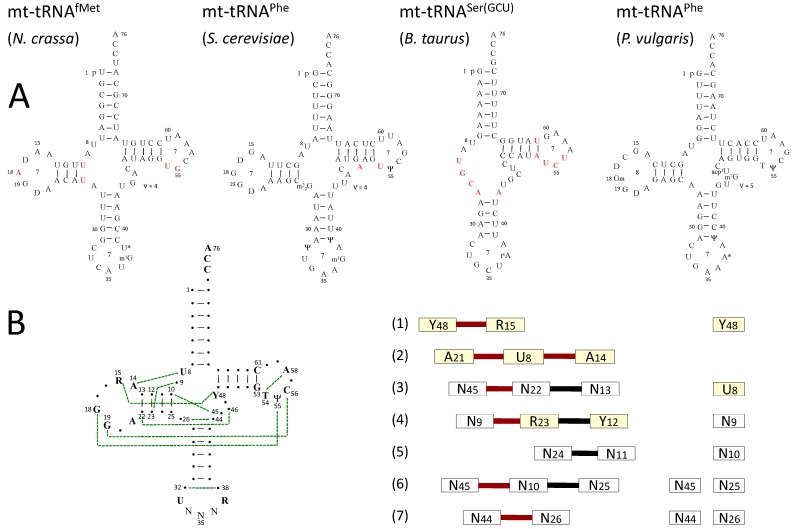Figure 2.
Typical sequences of mt-tRNAs displayed in cloverleaf-representation and comparison with the structural organization of cytosolic tRNAs. (A) Early examples of RNA sequences with post-transcriptional modifications shown in standard abbreviations [91] and deviations from the canonical cloverleaf coloured in red. These RNA sequences correspond to the first mt-tRNAs sequenced (N. crassa mt-tRNAfMet and S. cerevisiae mt-tRNAPhe), the first bizarre mt-tRNA sequence (Bos taurus mt-tRNASer(GCU)) and the first sequenced plant mt-tRNA (P. vulgaris mt-tRNAPhe); (B) Canonical tRNA cloverleaf folding of cytosolic tRNAs and the core of the structure organized into seven base layers (including conserved and semi-conserved residues) that define the tRNA L-shape (R for purine, Y for pyrimidine, N for anticodon residues, dotted green lines for conserved tertiary pairings, red bars for atypical interaction present in three of the displayed sequences, but absent in bizarre tRNASer and in some other mt-tRNAs and black bars for Watson-Crick interactions) (adapted from ref. [92]). For comparison, the simplified core within bizarre mt-tRNASer(GCU) is shown. Note that the sequence of P. vulgaris mt-tRNAPhe is of cytosolic-type, with conserved G18, G19, U55 and C56 needed for specific D/T-loop interaction.

